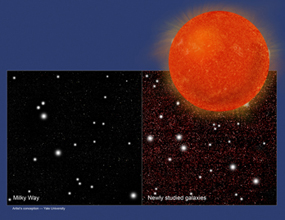Scientists Prepare to Take First-Ever Picture of a Black Hole
*The Event Horizon Telescope is an Earth-sized virtual telescope powerful enough to see all the way to the center of our Milky Way, where a supermassive black hole will allow astrophysicists to put Einstein’s Theory of General Relativity to the test.*
Astronomers, physicists and scientists from related fields across the world will convene in Tucson, Ariz. on Jan. 18 to discuss an endeavor that only a few years ago would have been regarded as nothing less than outrageous.
The conference is organized by Dimitrios Psaltis, an associate professor of astrophysics at the University of Arizona’s Steward Observatory, and Dan Marrone, an assistant professor of astronomy at Steward Observatory. (more…)

